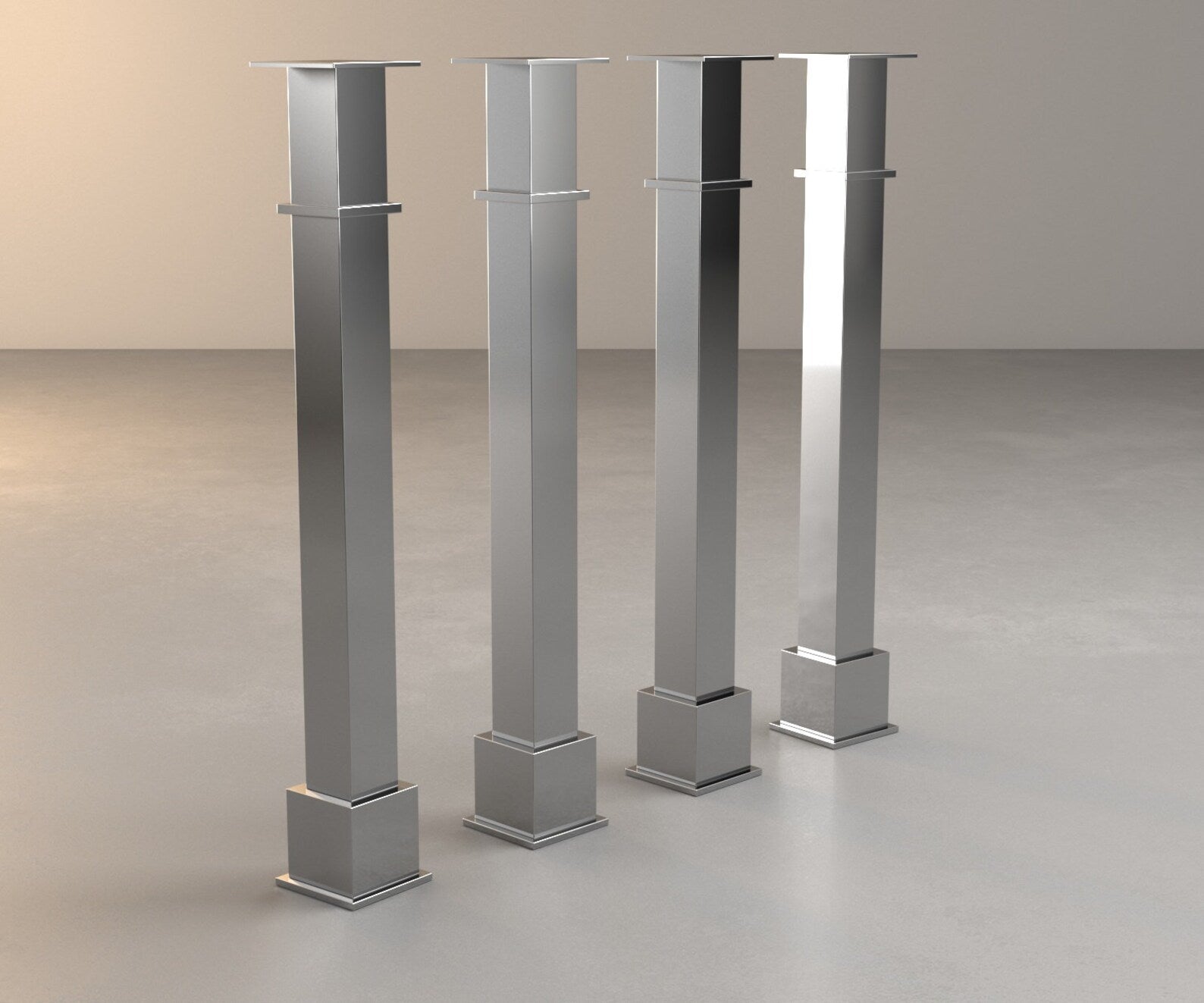Crucial Factors to Consider When Selecting Legs For Kitchen Island
Selecting the ideal legs for a cooking area island involves a cautious assessment of multiple variables that can significantly influence both functionality and visual allure. Amongst these, the selection of material plays a critical duty in ensuring longevity, while the style must enhance the existing style. Considerations such as elevation and weight assistance are necessary for stability and convenience. As we check out these components, it comes to be clear that each decision can have far-ranging ramifications for the total cooking area experience. What nuances should be taken into consideration in each of these groups to achieve the ideal equilibrium?
Product Options
When choosing legs for a kitchen island, understanding the different product choices is necessary for accomplishing both aesthetic allure and architectural stability (Legs For Kitchen Island). The choice of product significantly affects not only the toughness of the island but also its general layout and performance
Metal legs, typically made from stainless steel or wrought iron, contribute a modern-day and industrial feeling while making sure resilience and security. These products are resistant to use and can sustain substantial weight, making them perfect for larger islands.
An additional alternative is crafted products, like MDF or plywood, which can be extra cost-efficient while still supplying a variety of surfaces. They might not supply the very same degree of stability as solid timber or metal. Legs For Kitchen Island. Materials such as acrylic or glass can develop a contemporary look, though they may need additional support to ensure security.
Ultimately, the selection of material for cooking area island legs must line up with the desired functionality and the total theme of the cooking area.
Design And Style

When taking into consideration design, the form and surface of the legs are essential. Conical legs can give a feeling of agility and style, while thicker, extra durable legs can share stamina and security. Furthermore, the surface-- be it repainted, stained, or all-natural-- must enhance the cabinets and counter top materials to create a unified look.
Moreover, the layout of the legs can additionally show personal taste. Custom or attractive legs, such as those including complex carvings or unique geometric forms, can offer as prime focus, adding personality and character to the kitchen area. Ultimately, the appropriate selection will not only boost performance but additionally raise the aesthetic allure, making the kitchen area island a standout feature of the home.
Elevation Considerations
Choosing the ideal height for kitchen island legs is critical, as it directly impacts both capability and convenience. The basic elevation for a kitchen area island generally varies from 36 to 42 inches, lining up with usual counter top elevations. A 36-inch height is ideal for cooking and cooking, permitting comfortable usage of kitchen appliances and tools. Alternatively, a height of 42 inches is commonly chosen for islands planned for bar seating, fitting taller feceses and providing an informal dining experience.

It is also necessary to make up individuals' preferences and heights. Customizing the elevation can guarantee a comfy experience for all relative, making the cooking area island a more functional and delightful space.
Weight Assistance
Guaranteeing adequate weight assistance for kitchen island legs is crucial for both safety and capability. The kitchen island usually serves numerous purposes, consisting of cooking, dining, and added storage, requiring a robust support framework. When selecting legs, it is vital to consider the general weight ability required based on the island's planned use and the materials that will certainly be placed on it.
The choice of product for the legs plays a substantial role in their weight-bearing abilities. Strong wood, metal, and durable compounds typically provide exceptional toughness compared to lighter products. Additionally, the design of the legs-- whether they are directly, tapered, or have a pedestal kind-- can affect their ability to distribute weight successfully throughout the framework.
Constantly get in touch with the supplier's requirements relating to tons limitations to guarantee that the legs can sustain the intended weight without compromising safety and security. In recap, choosing kitchen area island legs with sufficient weight support is essential for developing a secure and practical cooking area.
Setup and Maintenance
Correct setup and upkeep of kitchen area island legs are critical for making sure longevity and security. This frequently entails securing the legs to the island base important link making use of appropriate bolts, ensuring that the legs are level and straightened.
Once set up, regular maintenance is essential to preserve the stability and look of the legs - Legs For Kitchen Island. For wooden legs, routine cleansing with a damp fabric and application of ideal wood polish can protect against moisture damage and keep their coating. Metal legs might call for a gentle cleaning option to get rid of grease and gunk, adhered to by a completely dry cloth to stop corrosion formation
In addition, inspect the legs frequently for indications of wear or damages, such as fractures or loosened joints. Tightening up screws or screws as required can likewise extend the life-span of the legs. By sticking to these installment and upkeep techniques, home owners can make certain that their cooking area island continues to be tough and aesthetically appealing for several years ahead.
Verdict

Visual comprehensibility is critical in choosing the design and layout of legs for a cooking area island, as these elements significantly influence the general atmosphere of the room. Conical legs can give a feeling of agility and elegance, while thicker, much more robust legs can communicate stamina and stability.Selecting the proper elevation for kitchen area island legs is critical, as it straight influences both capability and convenience. In recap, picking cooking area island legs with ample weight assistance is crucial for developing a practical and risk-free culinary area.
In conclusion, selecting legs for a kitchen island necessitates mindful factor to consider of different aspects, including material options, design, height, weight support, and installation.